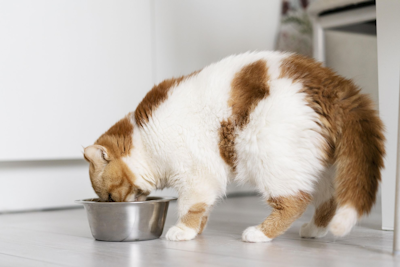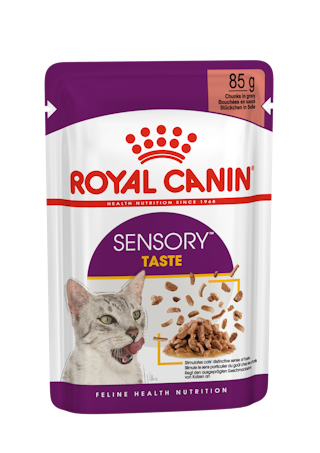In this article, you are going to learn about:
What is palatability?
Palatability refers to how dogs and cats perceive and experience their food. It is like how food critics write their commentary, instead of just saying “this tastes so good”, they will elaborate the meal on its presentation (look), aroma (smell), flavour (taste), and the oral sensation (texture). The concept of "palatability" in pet food operates on the same principles, just that the presentation (look) is less relevant to our furry friends. Apart from flavour (taste), aroma (smell) and sensation (texture) are definitely indispensable.
Sensation in Comparison: Pets VS Humans
Knowing that palatability involves multiple sensory experience, to help pet parents understand better about the key principles of feeding, the below table summarizes the features of the 3 senses among dogs, cats and humans.
|
sense/subject |
dogs |
cats |
humans |
|
smell |
Around 125M-220M olfactory cells |
Around 200M olfactory cells |
Around 5M olfactory cells[21] |
|
taste |
1,700 taste buds Can recognize sweetness Prefer umami taste |
470 taste buds Can’t recognize sweetness Prefer umami taste |
9,000 taste buds Can recognize sourness, sweetness, saltiness, bitterness, and umami taste |
|
touch |
Different breeds have varying oral anatomy and lower jaw shapes, which affects their preferences for food size and shapes. |
Different breeds have varying oral anatomy and lower jaw shapes, which affects their preferences for food size and shapes |
Less variation on jaw size, mostly depends on the size of mouth |
According to the table, we can assume that dogs and cats might prioritize the aroma (smell) and texture (touch) over taste (flavor) when compared to humans. And the sense of smell particularly plays an important role. If pet parents have ever observed their cats during meals, it is not hard to find that they always sniff the food before eating. This behaviour is rooted in the wild ancestry of dogs and cats. In their natural habitat, it was crucial to ensure the freshness and safety of the food. Therefore, they rely on their powerful sense of smell to confirm its safety before consumption.
In summary:
- Regarding Aroma:
Canned and wet food are particularly enticing for dogs and cats because they emit a richer aroma compared to dry kibble. In addition, they are more accustomed to the physiological structure and preferences of dogs and cats.
- Regarding Texture:
Besides the varying sizes of the jaws and oral anatomy, their dietary needs also vary from different facial structures, breeds and age. For instance, a 12-year-old senior cat might require or prefer softer-textured food due to declining biting forces or periodontal issues. Royal Canin specially designed FHN Senior Ageing 12+ Cat for elderly cats, each kibble has a crunchy outside, soft inside texture, providing a crispy yet tender meal that is easy to consume.
Conclusion: Why is Palatability so Important?
"The most nutritious food in the world is essential only if dogs and cats are willing to eat it and enjoy it."
Some pet owners still harbor misconceptions about palatability, assuming that 'good palatability' implies oily or strongly flavored food. Besides the physiological structure of dogs and cats, palatability also considers the physiological responses after consumption. Some of the considerations include whether the food is easily digestible or if it adds burden to the pet’s digestive system. To be able to manufacture diets that are welcomed by our pets, one has to possess in-depth knowledge about the physiological and behavioural needs of dogs and cats, at the same time supported with specialized and professional technologies. It takes an extremely high stake of professionalism to achieve good palatability while maintaining precise nutrition content.
The most nutritious food in the world is only essential only if dogs and cats are willing to eat it and enjoy it.
There are numerous pet food brands existing in the market, taking Royal Canin as an example, with a history spanning over 50 years, each of their products such as kibble, canned or wet food, undergoes a meticulous development process before launching. To begin, their professional vets, animal nutrition experts and research institutions will come up with the formulation of ingredient components and nutrient content. Together with the comprehensive research on the physiology of dogs and cats, palatability (aroma, texture, granule size, and shape), raw materials quality control, production management, and other factors considered, products are only released when they meet global standards after iterations, testing, and meticulous quality assurance.





